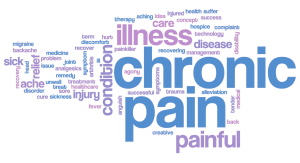Chiropractors are worried about opioids even though they don’t prescribe them. You see, here is the problem, musculoskeletal pain is the most common cause of severe long-term pain and disability. Chronic pain in this country is commonly treated by prescription opioids. We have more than quadrupled our death rate from overdose which parallels the prescription rate. This is not a bad drug, when used appropriately. Inappropriate use is costing tens of thousands of lives each year in this country. For that reason, all involved should be looking for alternative therapies with less risk.

Research has already found some possible effective evidence based treatments. “The American College of Physicians Clinical Practice Guideline recommends that for acute, subacute, or chronic low back pain, physicians and patients initially utilize spinal manipulation and delay pharmacologic management.”
The Bone & Joint Decade Task Force reported “Evidence suggests that manual therapy and exercise are more effective than alternative strategies for patients with neck pain.”
“For low back pain: “manipulation provides greater short-term reductions in self-reported disability and pain compared with usual medical care. 94% of the manipulation group achieved greater than 30% reduction in pain compared with 69% of usual medical care.” –Spine Journal
Chiropractic is not be the only alternative therapy that can help to solve this crisis. Addressing prescribing protocols and fully funding alternative treatments such as mental health, chiropractic, acupuncture, and massage then will improve the results of patient care and reduce the risk of addiction or death significantly.
“The rate of opioid use was lower for recipients of chiropractic services (19%) as compared to non-recipients (35%). The likelihood of filling a prescription for opioids was 55% lower in the chiropractic recipient cohort. Average annual per-person charges for opioid prescription fills were 78% lower for recipients of chiropractic services as compared to non-recipients. Average per person charges for clinical services for low back pain were also significantly lower for recipients of chiropractic services. (Avg. $1513 for chiropractic management vs. $6766 for medical management)” Link
 Currently, our government is attempting to address this issue legislatively, as well as through a multitude of programs. Here in Utah this crisis is a big issue in our legislature. All legislative attempts that I’ve seen thus far focus on helping in addiction recovery and the law enforcement side of things. They are doing a great job on these items. Progress needs to be made on the treatment and prevention side of things. There are two major obstacles to overcome. The first is that medical doctors have not received education on alternative treatments. They don’t know what is safe, or effective, or where their patients can receive safe, effective, evidence based alternative care. The second obstacle is that even if referrals are given to patients, payers do not cover those treatment options. These are not obstacles that can be overcome through legislation. However legislation can encourage change.
Currently, our government is attempting to address this issue legislatively, as well as through a multitude of programs. Here in Utah this crisis is a big issue in our legislature. All legislative attempts that I’ve seen thus far focus on helping in addiction recovery and the law enforcement side of things. They are doing a great job on these items. Progress needs to be made on the treatment and prevention side of things. There are two major obstacles to overcome. The first is that medical doctors have not received education on alternative treatments. They don’t know what is safe, or effective, or where their patients can receive safe, effective, evidence based alternative care. The second obstacle is that even if referrals are given to patients, payers do not cover those treatment options. These are not obstacles that can be overcome through legislation. However legislation can encourage change.
Educating medical doctors could be done by partnership with professional associations such as the Utah Chiropractic Physicians Association and the Utah Medical Association. Best practice guidelines should require alternative conservative care prior to opioid prescription. If the standard of care requires these things then the insurance industry will need to follow the guidelines and pay for alternative treatments.




